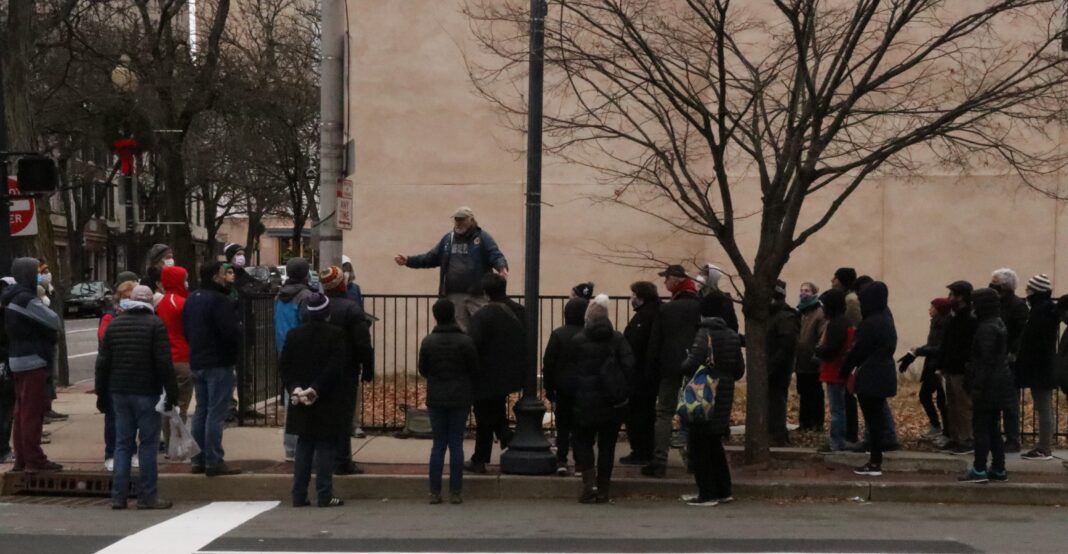Twenty-one years ago, Historian Ralph Siegel teamed up with a local coffee shop owner to get people into Trenton on the weekends. “It was a coffee shop, sort of like Starbucks…called Cafe Au Lait, and the owner I came up with the idea of doing battle walks out of the coffee shop on Saturday morning,” Siegel said.
During the week, the owner of Cafe Au Lait would sell tickets to a weekend tour of the battlefield of the Battle of Trenton. Siegel would direct the tourist through the Battle of Trenton using the Downtown area as the layout. “You know, I felt that the story of the Battle of Trenton was being ignored…I initially was looking at Washington’s Crossing and what was happening there…I said, wait a minute, this is utterly anticlimactic. The Crossing was not the point. The point was to attack (in) Trenton…,” noted Siegel.
Siegel did what every historian does when asking questions about a historical event: he read, wrote, and researched. ” I read as many books as I could find to understand the story of the Battle of Trenton, and I became fascinated with it, that it was a dramatic story that was being very much overlooked, ” Siegel said.
Siegel started with small groups of dozen on the weekends, professors from local college would bring their students, and Siegel would tell the story of the 40 minute battle in just over two hours. “I’m not a revolutionary war historian. I’m not an expert on the Revolutionary War. I know my way around what happened, but I am not qualified to give tours away from here,” Siegel said.
On December 27th, 2021, Siegel led the tour starting on E Front Street; working its way around the perimeter of Old City down to Lafayette and back up to the War Memorial. Siegel walked through the entire battle describing where German troops were stationed, displacing myths, and talking about how the American forces outmaneuvered and took away all the advantages of the elite troops they were fighting.
“When I started doing these tours. I had concerns that this wouldn’t work. It was too abstract (I feared that) people would not engage their imagination to imagine what it looked like,” Siegel said.
Imagination doesn’t seem a problem with those who came along on tour. Erik Isakson, a tourist from Detroit and self-proclaimed history buff, said that with the help of Siegel, it was easy to imagine the battle since the bones of the old town are similar. “It easy to visualize and have a guide cueing you saying: this happened here and this happened over there. It brings the battle to life, and you’re able to visualize a lot better than just reading a book or a Wikipedia article,” Isakson said.
Siegel is now retired and he has joined the group of retired workers following his passion working as a Licensed Battlefield Guide in Gettysburg. He said that this is where he got his start and as long as Patriots Week is around, he will come back. “You can learn about it in books. You can teach about it, but to stand at the spot where the event occurred… To me, it’s important to feel the terrain to feel the slope of the ground…,” Siegel said.
The slope is an essential part of the story because General George Washington outgunned the German soldiers stationed in Trenton. He set cannons where the Battle Monument is and positioned them downhill toward the Germans’ living corridors. “I’ve had plenty of people who’ve told me they never realized that Warren Street from Market Street down the Lafayette was actually on a hill. But they never actually realized that until they walked in, but I pointed it out,” Siegel said.

Though the tours used to be once a week, they now are once a year during Patriots Week. This year, Siegel led a little over 50 people through the old city as he passionately entertained the crowd for a little over two hours. At the end of it, he lit himself a victory cigar and answered every question asked by the public.





